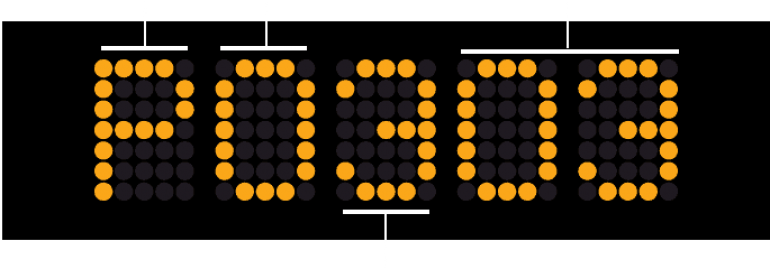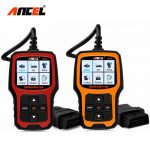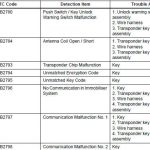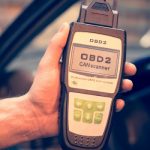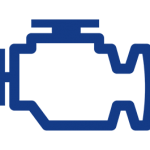If you want to know what your car’s diagnostic trouble codes mean, you need to know what they all mean. These codes are found on your vehicle’s computer and are often described by a number of words. To make things easier to understand, we’ve created this guide to explain DTCs. We also take a look at the symptom byte list. Keep reading to learn how these codes work and how to interpret them using an OBD software.
OBD II diagnostic trouble codes
The OBD II diagnostic trouble code (DTC) is a five-character string that represents a fault in your car. While the codes are used to indicate different faults on various car models, you must know what they mean before you can repair it. There are various reasons why the codes might be present, and they can be useful for identifying malfunctions in your vehicle. Listed below are some of the most common reasons.
OBD II is used on all cars and light trucks manufactured after 1996. These cars and light trucks are required to be equipped with this technology. The OBD II diagnostic trouble codes are made up of five characters, with each character indicating a different failure. Typically, the first two digits specify the type of code and are associated with a specific part of the car. However, you should understand that OBD2 codes are a vital tool for troubleshooting your car and should be handled with extreme caution.
In order for the diagnostic trouble codes to be effective, you need to know what they mean and how to interpret them. The diagnostic trouble code is a string of 5 characters: powertrain (engine, transmission, driveshaft), body (passenger compartment), chassis, and user network (onboard computer). The first two characters are generic, while the third character is manufacturer specific. The third character may be a number from one to nine, or the letters A, B, or C.
EVAP (exhaust emissions) code is used to identify issues with the vehicle’s EVAP (extender gas filtration) system. EVAP is responsible for preventing gas fumes from reaching the atmosphere and thereby reducing air pollution. In addition to the EVAP, there are other codes for transmission problems. These codes are most often triggered by issues with the vehicle’s transmission computer. Those who have a problem diagnosing this code must have specialized equipment.
Symptom byte list
GM is working on expanding the Diagnostic Trouble Codes (DTCs) to include a symptom byte to provide additional information to mechanics. These byte-like entries will reduce the number of DTCs and increase the amount of data available for diagnosis. These symptom bytes can also be helpful for technicians since they can narrow down the exact type of fault the car is having. Symptom bytes will allow for remote and over-the-air diagnostics in the future.
Symptom byte lists are available for nine different fault designations. Symptom byte lists are available in GM service information and on most diagnostic information services. Each symptom byte is described and defined in the list, and a range of characters is given in brackets. Most techs already know the letters and numbers after a five-character DTC. If a specific diagnostic problem appears in both lists, then the technician will have to choose the list that best matches the car.
ISO 15031-6:2015 specifies the format for DTCs. It contains the addressing structure, messages, and descriptions. It references the SAE J2012-DA (Digital Annex) for standardized DTCs and subtypes. These lists are useful for automotive diagnostics, and they are also helpful in identifying faulty components. These lists will help technicians determine what the problem is and identify a problem before it becomes a costly repair.
Meaning of the code
What is the Meaning of Diagnostic Trouble Codes? Diagnostic Trouble Codes are a group of numbers and codes that indicate problems with a vehicle. A typical DTC has a two-digit number between 0 and 99. Five of the digits represent a different problem. The first digit identifies a generic code, while the second digit denotes a particular problem within a specific subsystem. The P0219 code, for example, signifies an issue with the powertrain. The digits 0 and 2 are generic codes, while the last two digits (19) denote a specific problem.
If your car displays one of these trouble codes, the next step is to determine what it could mean. A powertrain code illuminates your Check Engine Light, while body and chassis codes are related to other systems. A network code indicates a communication loss or module failure. You can also look up non-powertrain trouble codes using a diagnostic scan tool. Once you know what the code means, you can fix the problem yourself. It will make things much easier.
While there are a number of codes, most of the major categories are standardized. This means that there are universal codes, such as ‘P0128’. However, there are also specific codes that relate to certain models of a specific manufacturer. A P0128 code indicates a problem with the car’s cooling system. This is a common issue for cars in the mid-range and higher price range. The first digit of a trouble code will determine if it is a generic or manufacturer-specific problem.
A P0129 error code can be related to many issues within a car. A P0129 trouble code is similar to a DTC. While P0131 is related to a faulty sensor, ‘P0326’ is related to a problem with the driver’s seat. However, P0130 indicates a problem with the transmission. This code can be a sign of a number of other issues, including engine damage.
Meaning of the code in OBD software
OBD software lets you diagnose your car by identifying and deciphering diagnostic trouble codes (DTCs) on your car. These codes are categorized into four major categories, with a letter or two followed by four digits. The first digit of a DTC indicates whether it is generic or manufacturer-specific, and the second digit is the manufacturer’s name.
One of the key features of this software is its ability to monitor multiple control units and store offline data. It is also possible to email collected data in CSV format. Other features include monitoring fuel consumption and optimizing it, as well as tracking the readiness of your car for emission testing. The OBD software also allows you to monitor the performance of sensors and parameters and provides you with a history of all DTCs.
The first step in diagnosing a car’s DTCs is to determine what the exact problem is. The reason why diagnostic trouble codes are useful is because they help a mechanic diagnose the car’s problem and take action. If a code is not specific to a part, a mechanic can’t fix it without the right information. OBD software also supports multiple control units, which makes it ideal for diagnosing and repairing vehicles of all types.
A simple way to decipher the information a diagnostic tool provides is to look for an OBDII code. These codes start with a letter. The letter P stands for powertrain, including the engine, transmission, and other associated accessories. The letter U stands for network & vehicle integration and covers the vehicle’s onboard computer systems. Chassis is the most common component of a car, and the number is either ‘0’, ‘1’, or ‘2’.
How to read a code
The most basic information about DTC codes is the first letter of the code. This character is followed by four digits and represents a specific part or system. The DTC database is made up of over 5000 different codes. It is difficult to memorize all of them. To identify specific trouble codes, an OBDeleven device is highly recommended. Alternatively, a diagnostic connector is the easiest way to read DTC codes.
Most common problems are classified into two categories. One is for the body, and the other is for the chassis. The body category includes functions inside the passenger cabin. The chassis category covers functions outside the passenger compartment, typically mechanical systems. The powertrain category is comprised of engine, transmission, and associated drivetrain accessories.
Lastly, the network and vehicle integration (U-codes) category contains codes for shared computer systems. The first digit of the trouble code is important in determining its type. A code with a “9” means it is related to the transmission. In some cases, an “8” may indicate that a sensor is failing.
A fault code is a series of 5 characters describing the type of problem. It’s important to understand the meaning of these codes and what they mean. You can read them with a code reader or a professional OBD software program. A code reader is an easy way to read diagnostic trouble codes. If you’re familiar with car diagnostics, you can read trouble codes on your own with a diagnostic scan tool.
In addition to reading DTCs, you should know where to find them. Most vehicles store trouble codes in their Powertrain Control Module and Engine Control Module, so knowing where to locate them will help you troubleshoot problems with your vehicle. If you have any questions, do not hesitate to contact your mechanic. The resources and information are vast. So, it’s worth taking time to learn more about your car’s trouble codes.


